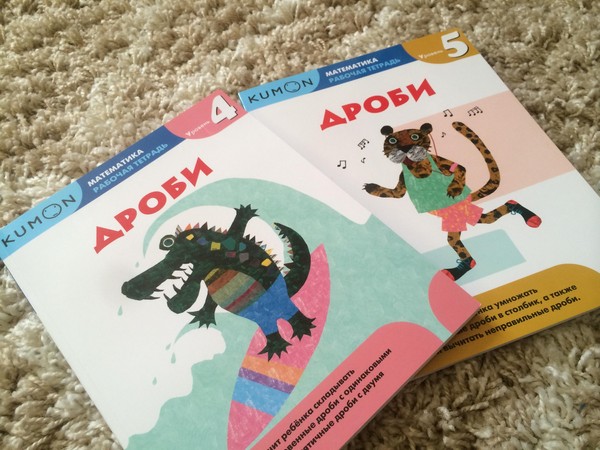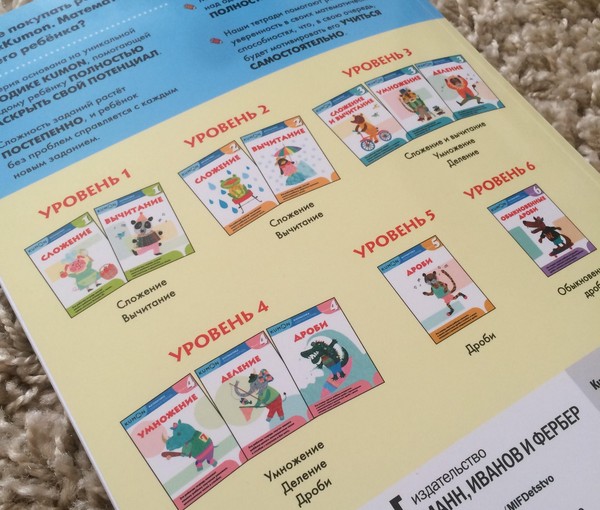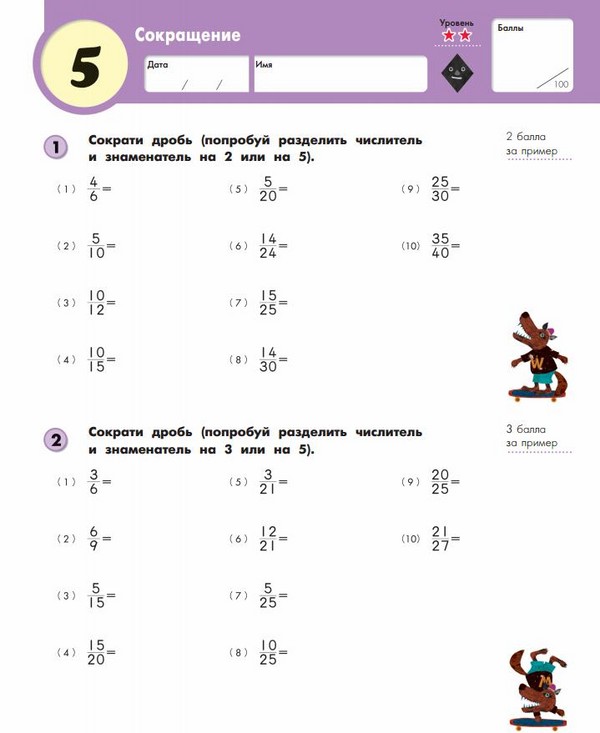How the Japanese teach children mathematics

Mathematics is a difficult subject that is not givenall children. It often happens that a child struggles to learn how to solve examples and problems, but nothing comes of it. Sometimes parents or tutors come to help, and sometimes they can hardly help.
The Japanese 60 years ago came up with how to solve this problem. They are the authors of Kumon's unique teaching methodology, which helps millions of children around the world learn this difficult subject.

Today, Kumon's notebooks deal with more than 4million children in 47 countries. Approximately 3 years ago they appeared in Russia, they published in the publishing house "Mann, Ivanov and Ferber". During this time, the notebooks had time to grow fond of children and parents, teachers appreciated. The undoubted advantage of these benefits is that they are adapted to Russian perception. They have cute illustrations, simple instructions for children and useful tips for parents.
Today, notebooks teach children from 2 to 17 years of age a variety of skills, not only mathematical.
The very same technique began precisely with notebooks onmathematics. In 1954, the Japanese mathematics teacher Toru Kumon decided to help his son, who had deuces in arithmetic. He came up with a series of gradually more complicated tasks that he had to perform every day. The boy worked hard and soon became an excellent student. When the parents of Takeshi's classmates found out about his success, they asked Torah Cumona to work out with their children.
So the famous method was born. And soon the Kumon centers began to open around the world.
The mathematical series of notebooks, published in Russia,includes 6 levels of difficulty. And helps to fully master all the mathematical skills that children learn in the primary and first years of secondary school.

Here is a list of these skills:
Addition and subtraction of single-valued and two-digit numbers (level 1);
Addition and subtraction of two- and three-digit numbers in a column (level 2);
addition and subtraction of multivalued numbers, multiplication of numbers within 10 x 9, division with the remainder and without it (level 3);
multiplication and division of many-valued numbers in a column, addition and subtraction of ordinary and decimal fractions (level 4);
multiplication and division of decimals into a column, addition and subtraction of irregular fractions (level 5);
Addition, subtraction, multiplication and division of fractions with different denominators (level 6).

In addition, the Japanese method is able to work miracles: it helps absolutely all children in mastering mathematics. The secret of its success in simple principles, which Toru Kumon still applied:
Training should be built according to the principle from simple to complex.
During the lessons, be sure to praise children even for the smallest achievements.
To achieve results, it is enough to study for 20 minutes a day.
Classes should not be heavy and tiring for the child. They should be built according to the principle of the game.
Allow children to be independent, do not correct them. Mistakes are the way to success.
Base lessons on an individual approach. Select assignments according to the abilities of the child, and not by age or class.
All these principles help children around the worldsuccessfully learn and achieve results in mastering mathematics. If you want to give your children the joy of knowing and the desire to learn, introduce them to the Kumon notebooks.













